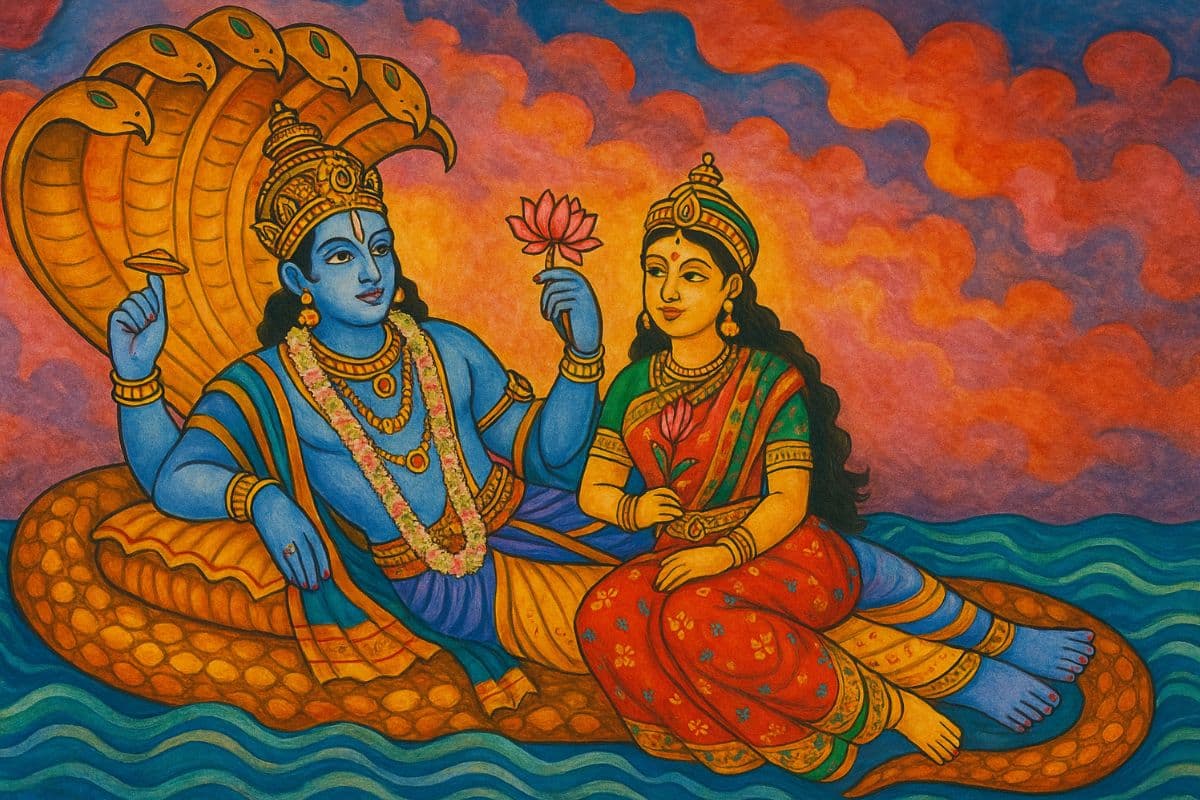Rama Ekadashi 2025: Vrat Katha, puja vidhi, muhurat and benefits

Explore the Rama Ekadashi 2025 date, story, puja method and fasting rituals
Among the 24 Ekadashis observed in a year, Rama Ekadashi holds a special place in the Hindu calendar. Dedicated to Lord Vishnu, this sacred fast is observed on the Ekadashi Tithi of Krishna Paksha in the month of Kartik. Devotees observe this fast to cleanse their mind, body, and soul, seeking liberation from past karmas and negative influences. It is believed to open doors to prosperity, peace, and salvation through devotion and self-discipline.
Rama Ekadashi also symbolises preparation for the holy months ahead, purifying one’s thoughts and actions as the year draws closer to its spiritual peak with Diwali. The vrat (fast) is known for granting the blessings of Moksha, removing sins, and restoring inner balance. It is said that observing Rama Ekadashi with faith is as rewarding as performing a thousand yajnas.
Rama Ekadashi 2025 Date, Muhurat, and Parana Time
In 2025, Rama Ekadashi falls on Friday, October 17, 2025. The day is marked by deep devotion, prayers, and fasting dedicated to Lord Vishnu and Goddess Lakshmi. Here are the detailed timings and rituals for this sacred day:
Ekadashi Tithi Begins: 10:35 am on October 16, 2025
Ekadashi Tithi Ends: 11:12 am on October 17, 2025
Parana (Breaking the Fast) Date: October 18, 2025
Parana Time: 06:00 am to 08:21 am
Dwadashi Ends: 12:18 pm on October 18, 2025
Devotees should break their fast during the Pratahkal (morning) after sunrise. Avoid breaking the fast during Hari Vasara, which marks the first quarter of Dwadashi Tithi. Those who cannot complete the ritual in the morning may perform Parana after Madhyahna, but it must be done within the Dwadashi period for the fast to be spiritually valid.
Rama Ekadashi Puja Vidhi: The Ritual of Devotion
The puja and fast of Rama Ekadashi are centred around dedication and purity. The rituals are simple yet deeply spiritual, connecting the devotee directly with Lord Vishnu’s compassionate energy.
1. Early Morning Preparations
-
Wake up before sunrise, bathe, and wear clean, traditional clothes.
-
Clean the puja space and place an idol or picture of Lord Vishnu.
2. Sankalp (Vow): Take a vow to observe the fast with sincerity and devotion, seeking peace, forgiveness, and prosperity.
3. Puja and Offerings:
-
Offer tulsi leaves, incense, ghee lamps, sandalwood paste, fruits, and flowers to Lord Vishnu.
-
Recite Vishnu Sahasranama or chant Om Namo Bhagavate Vasudevaya 108 times.
-
Light a ghee diya (lamp) throughout the day to maintain the energy of purity and focus.
4. Night Vigil and Bhajans: Many devotees stay awake through the night, singing bhajans and reading Vishnu-related scriptures like the Bhagavad Gita or Shri Ramcharitmanas.
5. Parana (Breaking the Fast): The next morning, after sunrise, the fast is broken by offering food to Brahmins, the poor, or feeding cows, followed by a light meal of fruits and milk.
To strengthen your devotion and align your vibration, listen and chant along with the Om Jai Jagdish Hare Aarti or Ram Aarti on AstroSure.ai for divine connection and peace.
Rama Ekadashi Vrat Katha: The Story of Faith and Redemption
The legend of Rama Ekadashi originates from the Padma Purana, describing the story of King Muchukunda, his daughter Chandrabhaga, and her husband Shobhana. King Muchukunda was a devout follower of Lord Vishnu. His daughter, Chandrabhaga, was equally devoted and married to Shobhana. One day, as Rama Ekadashi approached, the king announced that everyone in the kingdom must observe the fast, and no one was exempt.
Shobhana, though weak and frail, chose to follow his wife’s guidance and observed the fast. However, he could not bear the physical strain and passed away during the night. His soul, due to the merit of fasting, reached a divine celestial city that shone brighter than gold. When Chandrabhaga later learned of her husband’s new existence in the heavens, she was overwhelmed. She, too, prayed and fasted diligently for his well-being. Through her devotion and Lord Vishnu’s grace, Shobhana was granted liberation, and both were reunited.
This story reminds devotees that Rama Ekadashi is not merely about fasting from food but cleansing the heart of pride, greed, and negativity. The vrat purifies the soul and strengthens spiritual willpower.
Spiritual Significance and Benefits of Rama Ekadashi
-
Freedom from Past Karmas: The fast washes away sins and frees the devotee from past mistakes.
-
Path to Moksha: Rama Ekadashi is known for leading the soul closer to liberation.
-
Blessings of Vishnu and Lakshmi: Those who observe the vrat receive prosperity, peace, and divine grace.
-
Improved Focus and Inner Strength: The discipline of fasting enhances mental clarity and emotional stability.
-
Healing Energy: Chanting Vishnu’s name during Rama Ekadashi raises vibrational energy and promotes inner healing.
Ekadashi Fasting Rules and Food
Devotees observing a strict fast abstain from grains, pulses, and certain vegetables. However, fruits, milk, nuts, and light vegetarian meals are permitted. Avoid garlic, onion, and tamasic foods. Many devotees prefer to observe Nirjala Ekadashi, where they consume no food or water, dedicating the entire day to meditation and prayer.
The Divine Purpose of Rama Ekadashi
Rama Ekadashi is more than a ritual; it is a reminder of the strength of faith and the power of surrender. Fasting on this day helps devotees control desires, practice patience, and rediscover divine connection. As the scriptures describe, those who sincerely observe this vrat with devotion and purity receive unending blessings from Lord Vishnu. So, as Rama Ekadashi 2025 approaches, prepare with devotion, clarity, and love. Chant, meditate, and keep your heart aligned with the divine.



